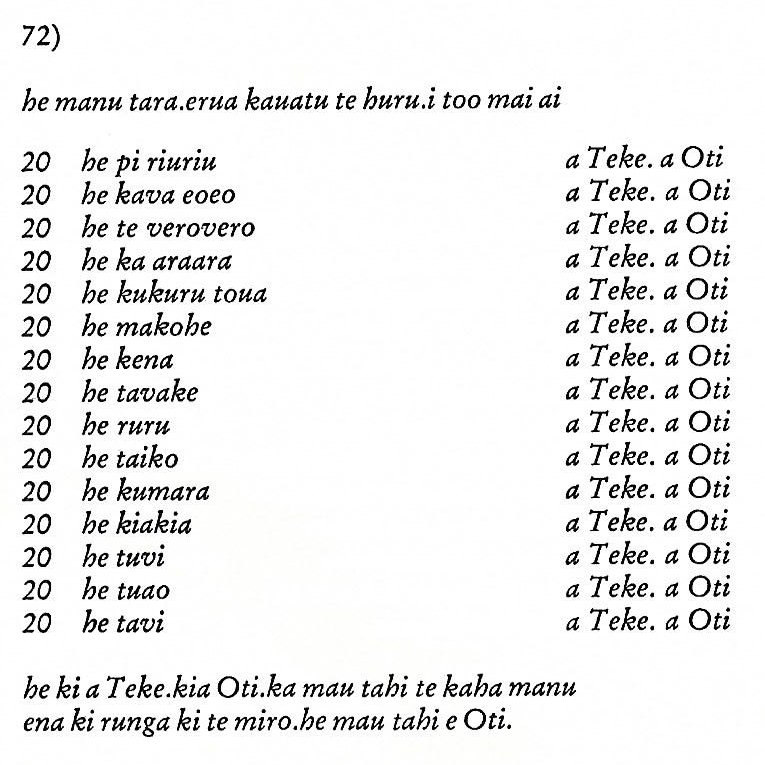
| he
ki hokoou a Teke.kia Oti.ka oho ki roto |
Then Teke said to Oti, 'Go to the sugarcane
plantation [ka oho ki roto ki te toa] and
carefully break off [ka hahati] pieces of
cane. Not one variety shall be left (i.e., shall
be omitted) when the pieces of sugarcane are
taken along.' |
| ki
te toa ka hahati tahi.te mee o to ea eta(-) |
|
hi.koia ko pupura
ana too.mai.he oho. |
|
Pura.
To turn white; glow, brilliance; he-pura
te mata, the eyes twinkle (said of someone
who looks at something with great interest).
Purapura, descendent; koau he purapura o
Miru, I am a descendent of the Miru tribe.
Pupura, the part of the sugarcane or of
the ti plant which is cut off and planted
again: pupura tôa, pupura ti. Vanaga.
|
| a
Teke.a Oti.toraua titiro tokoa.he
ōo. ki |
Teke and Oti went with their assistants, entered
into the sugarcane plantation, and broke off
pieces everywhere.
Teke said the names [he nape i te ingoa]
of all the different varieties of sugarcane. |
| roto
ki te toa.he hahati tahi.he nape i te ingoa o |
| te
toa.e Teke. |
|
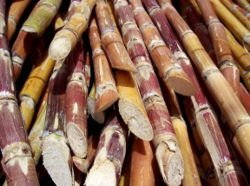 |
|
E:70 |
|
etahi te piere
te amonga o te
toa.he ki a Teke. |
There were a thousand loads [te amonga]
of sugarcane.
Teke said to Oti [oti], 'Bring [ka mau]
(that) on board the canoe!'
The men picked up [he mau] the
sugarcane, came on board the canoe, and left it
there.
The men returned (to the other things) [ki
te me'e] and took these too. |
| kia
oti ka mau ki runga ki te miro.he mau te |
|
tangata.i te toā.he
tuu he hakarere i runga i te |
|
miro.he hoki mai te tangata.ki te mee |
| he
too tokou. |
|
The definite article te could have
indicated a time of standstill (solstice) in
contrast to the active definite article he.
June 17 (*88) + *6 = *95. Betelgeuze (168) + 6 =
175 (Canopus).
Amo. Amo. To carry on one's shoulders:
O Yetú i-amo-ai te tatauró ki ruga ki-te
maúga Kalvario. Jesus carried his cross up
to the Calvary. Amoga, bundle; to tie in
a bundle: he-amoga i te hukahuka, to tie
a bundle of wood. Vanaga. 1. A yoke, to carry;
amoga, burden, load. 2. To bend, to beat a
path. Churchill. Âmo. 1. To clean, to
clean oneself: he-âmo i te umu, to clean
the earth oven; ka-âmo te hare, ka
haka-maitaki, clean the house, make it good;
he-âmo i te ariga, to clean one's face
wetting it with one's hand. 2. Clear;
ku-âmo-á te ragi, the sky is clear. 3. To
slip, to slide, to glide (see pei-âmo).
Ámoámo, to lick up, to lap up, to dry; to
slap one's body dry (after swimming or bathing):
he-âmoâmo i te vaihai rima.
Vanaga. Amoamo. 1. To feed, to graze. 2.
To spread, to stretch (used of keete).
Churchill.
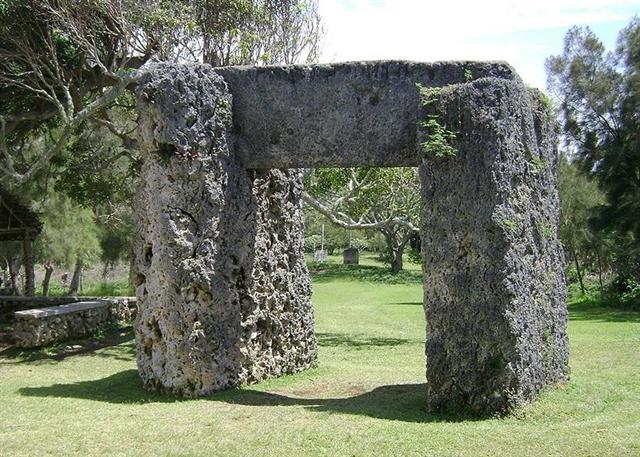
...
During
his coronation year king Taufa'ahau Tupou
IV advanced the theory that the
Ha'amonga stones must have served a greater
purpose than the more obvious function as a
gateway. This proved to be the case when closer
investigation revealed a secret mark on the
lintel (= threshold) stone ... On June 21st 1967
at dawn his majesty was present at this place
and it was a thrilling moment when the sun rose
at the exact point indicated by his
interpretation of the lines etched on the great
stone ... |
| he
ki hokoou te ariki a Hotu kia Teke. |
Then King Hotu spoke to Teke, 'Take along the
four-legged animals (manu vae eha), the
pigs (? kekepu), the sea swallows (manu
tara), and the flies (takaure) [te
takaure he]!'
King Hotu continued to speak to Teke, 'The
thing [he mee] that you must not forget
under any circumstances are the flies! The flies
are creatures [he mee o rehu a takaure]
that must not be forgotten.
If you forget the flies [ana rehu te
takaure i a koe] the multitude [te
piere] of people will perish [he ngaro].
But when you bring the flies on land [ana
tomo ki runga ki te kainga te takaure], then
there will be a great number of people (he
piere tangata)!' |
| ka
too te manu vae eha.te kekepu. te manu |
|
tara.te takaure.(h)e
ki hokoou te ariki a Hotu |
| kia
Teke. te mee mo tae rehu i a koe he taka(-) |
|
ure.he mee o rehu a te takaure. ana rehu te |
|
takaure i a koe.he ngaro te piere tangata. |
| ana
tomo ki runga ki te kainga te takaure ena |
| i a
koe ka aī te mee he
piere tangata. |
|
...From a religious point of
view, the high regard for flies, whose increase
or reduction causes a similar increase or
reduction in the size of the human population,
is interesting, even more so because swarms of
flies are often a real nuisance on Easter
Island, something most visitors have commented
on in vivid language. The explanation seems to
be that there is a parallel relationship between
flies and human souls, in this case, the souls
of the unborn. There is a widespread belief
throughout Polynesia that insects are the
embodiment of numinous beings, such as gods or
the spirits of the dead, and this concept
extends into Southeast Asia, where insects are
seen as the embodiment of the soul ...
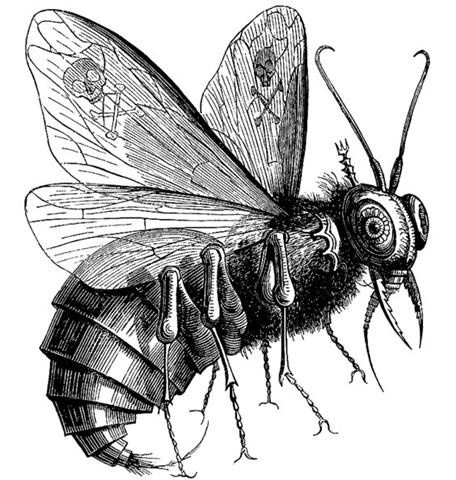 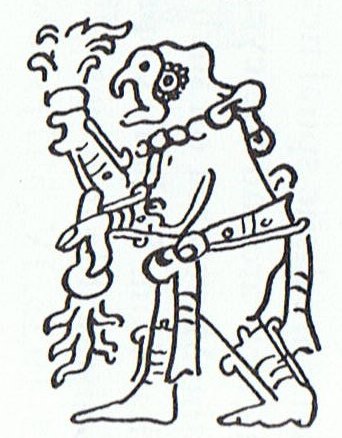 |
|
E:71 → 26000 /
366
... The right ascension
('longiturde') positions of the stars change
over time and the total cycle of the precession
has been estimated to be around 26000 years.
This was well known since ancient times: ... The
verdicts concerning the familiarity of ancient
Near Eastern astronomers with the Precession
depend, indeed, on arbitrary factors; namely, on
the different scholarly opinions about the
difficulty of the task. Ernst Dittrich, for
instance, remarked that one should not expect
much astronomical knowledge from Mesopotamia
around 2000 BC. 'Probably they knew only
superficially the geometry of the motions of sun
and moon. Thus, if we examine the simple, easily
observable motions by means of which one could
work out chronological determinants with very
little mathematical knowledge, we find only the
Precession.' There was also a learned Italian
Church dignitary, Domenico Testa, who snatched
at this curious argument to prove that the world
had been created ex nihilo, as described in the
first book of Moses, an event that supposedly
happened around 4000 BC. If the Egyptians had
had a background of many millennia to reckon
with, who, he asked, could have been unaware of
the Precession? 'The very sweepers of their
observatories would have known.' Hence time
could not have begun before 4000, Q. E. D.
  |
| he ki hokoou a
Hotu.kia Teke.e hakarite te |
Then
Hotu said to Teke, 'There shall be an equal
number of people (i.e., of both sexes) when you
take them aboard the canoe. The same (goes) for
the four-legged animals, the pigs (?) and the
chicken.' |
| tangata.ana too
koe ki runga ki te miro.peira |
|
tokoa te manu vae
ehā. te kekepu.
tokoa.te moa |
|
tokoa. |
|
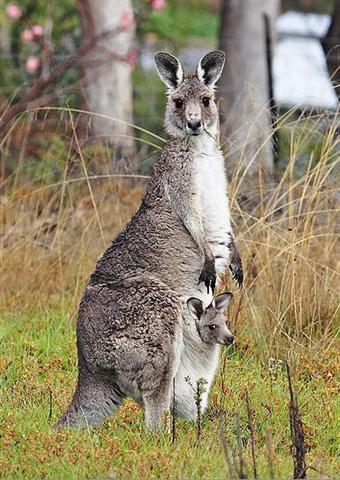 |
| he oho.a
Teke.anake ko toona titiro.he too mai |
Teke
went with all his assistants. They took the
four-legged animals, male and female, fifty in
all. [25 + 25 = 50] |
| i te manu vae ehā.
ko te tamaaroa ko
te tama- |
|
hahine.erima te
kauatu te manu vae eha. |
|
Matua. 1. Father (also matu'a tamâroa);
matu'a hâgai, adoptive father or mother;
matu'a ké, uncle, aunt, close relative.
2. Part of a net from which the weaving started:
te matu'a o te kupega. Vanaga. 1.
Chronic. Ta.: matua, id. 2. A parent (metua);
matua tamaroa, father; matua tamaahine,
mother; matua too, adoptive father;
matua kore, orphan. P Pau.: makuahine,
mother. Mgv.: motua, father; matua,
superintendent, overseer. Mq.: matua, any
man; motua, father. Ta.: metua,
metia, father, mother, parent. Churchill. |
|
50 manu vae ehā. |
(There
were) fifty four-legged animals.
[50 * 4 = 200] They took all kinds of birds [anake te
huru o te manu], male and female,
a hundred pigs (?), [50 + 50 = 100]500 chickens,
[250 + 250 = 500] and five large calabashes (kaha) full of
flies. |
| he too
mai anake te huru o te manu ko te tamaa(-) |
| roa ko
te tamahahine tokoa |
| 100 kekepu. |
| 500 he moa |
| 5 erima
kaha o te takaure. |
| Crossed out:
5
takaure
manu tara. |
[Five sooty sea swallows, manu tara,
recreating the cycle of life, taka-ure.
→ 355 /
5 = 71.] |
|
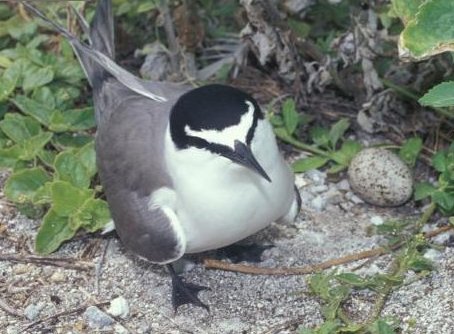 |
|
...
There is a couple residing in
one place named Kui [Tui] and Fakataka
(Haka-taka). After the couple
stay together for a while Fakataka is
pregnant. So they go away because they wish to
go to another place - they go. The canoe goes
and goes, the wind roars, the sea churns, the
canoe sinks. Kui expires while
Fakataka swims.
Fakataka
swims and swims, reaching another land. She goes
there and stays on the upraised reef in the
freshwater pools on the reef, and there delivers
her child, a boy child ...
... And
then the bone spoke; it was there in the fork of
the tree: Why do you want a mere bone, a round
thing in the branches of a tree? said the head
of One Hunaphu when it spoke to the maiden. You
don't want it, she was told. I do want it, said
the maiden. Very well. Stretch out your right
hand here, so I can see it, said the bone. Yes,
said the maiden. She stretched out her right
hand, up there in front of the bone. And then
the bone spit out its saliva, which landed
squarely in the hand of the maiden. And then she
looked in her hand, she inspected it right away,
but the bone's saliva wasn't in her hand. It is
just a sign I have given you, my saliva, my
spittle. This, my head, has nothing on it - just
bone, nothing of meat. It's just the same with
the head of a great lord: it's just the flesh
that makes his face look good. And when he dies,
people get frightened by his bones. After that,
his son is like his saliva, his spittle, in his
being, whether it be the son of a lord or the
son of a craftsman, an orator. The father does
not disappear, but goes on being fulfilled.
Neither dimmed nor destroyed is the face of a
lord, a warrior, craftsman, an orator. Rather,
he will leave his daughters and sons. So it is
that I have done likewise through you. Now go up
there on the face of the earth; you will not
die. Keep the word. So be it, said the head of
One and Seven Hunaphu - they were of one mind
when they did it ...
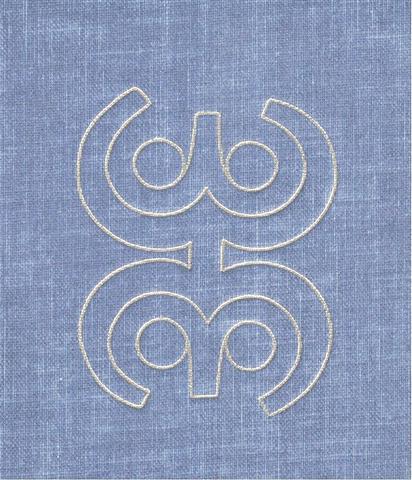 |
|
E:72 → 360 / 5 |
| he manu tara.erua
kauatu te huru.i too mai ai |
They also took
along twenty (birds) each [10 + 10 = 20]: |
|
manu tara |
|
20 |
he |
pi riuriu |
a Teke. a Oti. |
|
20 |
kava eoeo |
|
20 |
te verovero |
|
20 |
ka araara |
|
20 |
kukuru toua |
|
20 |
makohe |
|
20 |
kena |
|
20 |
tavake |
|
20 |
ruru |
|
20 |
taiko |
|
20 |
kumara |
|
20 |
kiakia |
|
20 |
tuvi |
|
20 |
tuao |
|
20 |
tavi |
|
| he ki a Teke.kia
Oti.ka mau tahi te
kaha manu |
Teke
said to Oti, 'Take [ka mau] all the big
calabashes with the birds [te kahu
manu] on board the canoe!' |
| ena ki runga ki
te miro.he mau tahi e Oti. |
|
Tahi. Other; te tahi tagata someone
else; te tahi hoki... and others
again...; te tahi... te tahi..., some...
others; te tahi atu, the rest of them.
Tahitahi, to scrape with a sharpened stone.
Vanaga. One, only, simple; te tahi, next;
e tahi, anyone; e tahi no, unique,
unity; e tahi e tahi, simultaneous. P
Mgv.: Mq., Ta.: tahi, one. Churchill. |
15 * 20 = 300 = 150 + 150. Or rather, including also manu tara:
16 * 20 = 320 (= 408 - 88).
... The Gilbert Islanders are Polynesians, having emigrated,
according to their traditions, from Upolu, Samoa, which
they look upon as te buto (Maori pito), the Navel
of the World. They never counted the nights of the Moon beyond
the twentieth, so far as Grimble was able to ascertain, and in
the vagueness of their lunar calendar bore no resemblance to
their Micronesian neighbors of the Carolines ... One of the
names for east, Makai-oa, was said to be the name of a
far eastern land, not an island, which their navigators had
visited in ancient times. Tradition called this great land 'the
containing wall of the sea, beyond the eastern horizon, a
continous land spreading over north, south, and middle, having a
marvelous store of all sorts of food, high mountains and
rivers'. It was also called Maia-wa (wa being
'space, distant'). This is a clear reference to ancient voyages
to the American coast from which the Polynesians are thought to
have introduced the sweet potato into the Pacific area. The
similarity of Maia to Maya may be more than a coincidence
...
Supposing we should count ahead from heliacal
Betelgeuze (*88) in order to find the beginning of these 320
'birds', we would then have to add 1 (manu tara) + 18 (he huru o te me'e a Oti). June
17 (168) + 19 = 187 (July 6):
|
he huru o te mee
Huru. Custom,
tradition, behaviour,
manners, situation, circumstances; poki huru hare,
child who stays inside (to keep a fair complexion);
te huru o te tagata rivariva, a fine person's
behaviour; pehé te huru o Hiva? what is the
situation on the mainland? Huruhuru, plumage,
feathers (the short feathers, not the tail
feathers), fleece of sheep. Vanaga. Samoa:
sulu, a torch; to light by a torch; sulusulu,
to carry a torch; susulu, to shine (used of
the heavenly bodies and of fire). Futuna: susulu,
the brightness of the moon. Tonga: huluaki,
huluia, huluhulu, to light, to
enlighten; fakahuhulu, to shine; iuhulu,
a torch or flambeau, to light with a torch. Niuē:
hulu, a
torch; huhulu,
to shine (as the moon). Maori: huru,
the glow of the sun before rising, the glow of fire.
Churchill 2. |
|
1 |
he |
ngaatu |
a Oti. |
|
1 |
tavari |
|
1 |
riku |
|
1 |
ngaoho |
|
1 |
naunau. |
|
1 |
uku koko |
|
1 |
nehenehe |
|
1 |
poporo. |
|
1 |
kavakava atua |
|
1 |
kohe. |
|
1 |
nehenehe [sic!] |
|
1 |
pua |
|
1 |
harahara |
|
1 |
hua taru. |
|
1 |
makere |
|
1 |
hata. |
|
1 |
tuere heu. |
|
1 |
tureme |
|
APRIL 11 |
12 |
13 |
14
(104) |
15 |
16
(*26) |
 |
 |
 |
 |
 |
 |
|
Ga1-21 |
Ga1-22 |
Ga1-23 |
Ga1-24 |
Ga1-25 |
Ga1-26 |
|
ο
Aurigae (85.8), γ Leporis (85.9)
YANG
MUN (α Lupi)
|
μ
Columbae,
SAIPH
(Sword) =
κ
Orionis
(86.5),
τ
Aurigae,
ζ
Leporis (86.6) |
υ Aurigae (87.1), ν Aurigae (87.2),
WEZN (Weight) = β Columbae,
δ Leporis (87.7),
TZE (Son) = λ Columbae
(87.9) |
Ardra-6 (The Moist One) /
ANA-VARU-8 (Pillar to sit by)
χą
Orionis,
ξ
Aurigae (88.1),
BETELGEUZE
=
α
Orionis
(88.3),
ξ
Columbae (88.5),
σ
Columbae (88.7) |
η
Leporis (89.0),
PRAJA-PĀTI (Lord of Created Beings) =
δ
Aurigae,
MENKALINAN (Shoulder of the Rein-holder) = β
Aurigae, MAHASHIM (Wrist) = θ Aurigae,
and
γ
Columbae (89.3),
π
Aurigae (89.4),
η
Columbae (89.7)
*48.0 = *89.4 - *41.4 |
μ
Orionis (90.3), χ˛ Orionis (90.5) |
|
June
14 (165) |
15 |
16 |
17
(168) |
18 |
19 |
|
°June 10 (161) |
11 |
12 |
13
(164) |
14 |
15
(*86) |
|
'May 18 (*58) |
19 |
20
(140) |
21 |
22 |
23
(*63) |
|
"May 4 (*54) |
5 |
6 |
7
(127) |
8 |
9
(*49) |
|
DAY
85 - 64 = 21 |
22 |
23 |
24 |
25 |
26 |
|
21 Ko Roto
Kahi
a
touo renga |
22 Ko Papa
Kahi
a
roro (ko pa) |
23 Ko Puna A
Tuki
hauhau renga |
24 Ko Ehu Ko
Mahatua
a
piki rangi a hakakihikihi mahina |
25 Ko Maunga Teate(t)a
a
pua katiki |
26 Ko Te
Hakarava
a
hakanohonoho |
|
4
he toa ruma |
5 he toa tuitui koviro |
6 he toa vitiviti |
7 he toa marikuru |
he ngaatu |
he tavari |
|
Hata. 1. Table, bureau. P
Pau.: afata, a chest, box. Mgv.: avata,
a box, case, trunk, coffin. Mq.: fata,
hata, a piece of wood with several branches
serving as a rack, space, to ramify, to branch;
fataá, hataá, stage, step, shelf.
Ta.: fata, scaffold, altar. 2.
Hakahata, to disjoint; hakahatahata,
to loosen, to stretch. P Pau.: vata, an
interval, interstice. Mgv.: kohata, the
space between two boards, to be badly joined;
akakohata, to leave a space between two
bodies badly joined; hakahata, to be
large, broad, wide, spacious, far off. Mq.:
hatahata, fatafata, having chinks,
not tightly closed, disjointed. Ta.: fatafata,
open. 3. Hatahata, calm, loose, prolix,
vast. Mgv.: hatahara, broad, wide,
spacious, at one's ease. Ta.: fatafata,
free from care. Mq.: hatahata, empty,
open. 4. Hatahata, tube, pipe, funnel.
Churchill. Sa.: fata, a raised house in
which to store yams, a shelf, a handbarrow, a
bier, a litter, an altar, to carry on a litter;
fatāmanu, a
scaffold. To.: fata,
a loft, a bier, a handbarrow, to carry on a
bier; fataki,
a platform. Fu.: fata,
a barrow, a loft; fatataki,
two sticks or canes attached to each other at
each side of a house post to serve as a shelf.
Niuē: fata,
a cage, a handbarrow, a shelf, a stage,
(sometimes) the upper story of a house. Uvea:
fata,
a barrow, a bier. Fotuna: fata,
a stage. Ta.: fata,
an altar, a scaffold, a piece of wood put up to
hang baskets of food on; afata,
a chest, a box, a coop, a raft, a scaffold.
Pau.: fata,
a heap; afata,
a box, a chest. Ma.: whata,
a platform or raised storehouse for food, an
altar, to elevate, to support. Moriori:
whata, a
raft. Mq.: fata,
hata,
hataá,
shelves. Rapanui: hata,
a table. Ha.: haka,
a ladder, an artificial henroost;
alahaka, a
ladder. Mg.: ata,
a shelf; atamoa,
a ladder; atarau,
an altar. Mgv.: avata,
a coffer, a box. Vi.: vata,
a loft, a shelf; tāvata,
a bier. The Samoan fata
is a pair of light timbers pointed at the ends
and tied across the center posts of the house,
one in front, the other behind the line of
posts; rolls of mats and bales of sennit may be
laid across these timbers; baskets or reserved
victuals may be hung on the ends. The litter and
the barrow are two light poles with small slats
lashed across at intervals. The Marquesan
fata is a
stout stem of a sapling with the stumps of
several branches, a hat tree in shape, though
found among a barehead folk. These illustrations
are sufficient to show what is the common
element in all these fata
identifications, light cross-pieces spaced at
intervals. With this for a primal signifaction
it is easy to see how a ladder, a raft, a
henroost, an altar come under the same stem for
designation. Perhaps Samoan fatafata
the breast obtains the name by reason of the
ribs; it would be convincing were it not that
the plumpness of most Samoans leaves the ribs a
matter of anatomical inference. Churchill 2.
Vao. Mgv.: vao, uninhabited
land. Ta.: ? [obliterated text] ... of the
valleys. Mq.: vao, bottom of a valley.
Sa.: vao, the bush. Ma.: wao, the
forest. Churchill. |

...
The earliest depiction that has been linked to
the constellation of Orion is a prehistoric
(Aurignacian) mammoth ivory carving found in a
cave in the Ach valley in Germany in 1979.
Archaeologists have estimated it to have been
fashioned approximately 32,000 to 38,000 years
ago ... The artist cut, smoothed and carved one
side (A) and finely notched the other
side (B) and the edges. Side A
contains the half-relief of an anthropoidal
figure, either human or a human-feline hybrid,
known as the 'adorant' because its arms are
raised as if in an act of worship.
|
Egyptian jubilation |
 |
Phoenician
he |
 |
Greek
epsilon |
Ε (ε) |
|
Wikipedia points at the Egyptian
gesture with arms held high as a
Sign of jubilation, which may have
been the origin (via Phoenician
he) of epsilon.

 |
On
side B together with the four edges is
a series of notches that are clearly set in an
intentional pattern. The edges contain a total
of 39 notches in groups of 6, 13, 7 and 13. A
further 49 notches on side B are
arranged in four vertical lines of 13, 10, 12
and 13 respectively plus a further notch that
could be in either of the middle two lines ...
The grouping of the notches on the plate
suggests a time-related sequence. The total
number of notches (88) not only coincides with
the number of days in 3 lunations (88.5) but
also approximately with the number of days when
the star Betelgeuse (α Ori) disappeared from
view each year between its heliacal set (about
14 days before the spring equinox around 33,000
BP) and its heliacal rise (approximately 19 days
before the summer solstice).
Conversely, the nine-month period when Orion was
visible in the sky approximately matched the
duration of human pregnancy, and the timing of
the heliacal rise in early summer would have
facilitated a ‘rule of thumb’ whereby, by timing
conception close to the reappearance of the
constellation, it could be ensured that a birth
would take place after the severe winter
half-year, but leaving enough time for
sufficient nutrition of the baby before the
beginning of the next winter. There is a
resemblance between the anthropoid on side A and
the constellation Orion. None of these factors
is convincing when taken in isolation, because
of the high probability that apparently
significant structural and numerical
coincidences might have arisen fortuitously.
However, taken together they suggest that the
anthropoid represented an asterism equivalent to
today’s constellation of Orion, and that the
ivory plate as a whole related to a system of
time reckoning linked to the moon and to human
pregnancy. If so, then ethnographic comparisons
would suggest that the Geißenklösterle
culture related their ‘anthropoid’ asterism to
perceived cycles of cosmic power and fertility
...
 |
|
MAY 3 |
4 |
5 (*45) |
6 |
7 (127) |
 |
 |
 |
 |
 |
|
Ga2-13 |
Ga2-14 |
Ga2-15 (45) |
Ga2-16 |
Ga2-17 (19 + 28 = 47) |
|
CLOSE
TO THE
SUN: |
|
WEZEN (Weight) = δ Canis Majoris
(107.1),
τ
Gemini (107.7),
δ
Monocerotis (107.9) |
no star listed (108) |
λ Gemini (109.4),
WASAT
(Middle) = δ Gemini
(109.8)
*68.0 = *109.4 - *41.4 |
no star listed (110) |
ALUDRA (Virgin) = η Canis Majoris
(111.1),
PROPUS = ι Gemini
(111.4),
GOMEISA (Water-eyed) = β Canis Minoris
(111.6)
*70.0 = *111.4 - *41.4 |

...
The Pythagoreans make Phaeton
fall into Eridanus, burning part of its
water, and glowing still at the time
when the Argonauts passed by. Ovid
stated that since the fall the Nile
hides its sources. Rigveda 9.73.3 says
that the Great Varuna has hidden the
ocean. The Mahabharata tells in its own
style why the 'heavenly Ganga' had to be
brought down. At the end of the Golden
Age (Krita Yuga) a class of
Asura who had fought against the
'gods' hid themselves in the ocean where
the gods could not reach them, and
planned to overthrow the government. So
the gods implored Agastya
(Canopus, alpha Carinae = Eridu) for
help. The great Rishi did as he was
bidden, drank up the water of the ocean,
and thus laid bare the enemies, who were
then slain by the gods. But now, there
was no ocean anymore! Implored by the
gods to fill the sea again, the Holy One
replied: 'That water in sooth hath been
digested by me. Some other expedient,
therefore, must be thought of by you, if
ye desire to make endeavour to fill the
ocean ... |
|
July 6 (168 + 19) |
7 (188) |
8 |
9 |
10 |
|
°July 2 |
3
(184) |
4 |
5 |
6
(*107) |
|
'June 9 |
10
(161) |
11 |
12 |
13
(*84) |
|
...
The month, which takes its name from
Juppiter the oak-god, begins on June
10th and ends of July 7th. Midway comes
St. John's Day, June 24th, the day on
which the oak-king was sacrificially
burned alive. The Celtic year was
divided into two halves with the second
half beginning in July, apparently after
a seven-day wake, or funeral feast, in
the oak-king's honour ... |
|
"May 26 |
27 |
28 (148) |
29 |
30 (*70) |
|
DAY 107 - 64 = 43 |
44 |
45 |
46 (= 366 - 320) |
47 |
|
←
Manu Tara
(20) → |
43
Vai Ngaere |
44
E Tai E Te-ho E
ka
tao tauu ngu
e po e kiko e ka tutu toou oone |
45
Vai Ngaere
a puku hehaheha |
46 E Hue E Renga
Havini E
ka rangi atu koe kia nua
kia motu roa ka vere mai taau taueve
miritonu |
47
E Tai E
hare hakangaengae i te tahu hanga
rikiriki |
|
Ho. 1. Ho!, Oh!
2. Lest, on the point of. 3. To deliver,
to give up. Churchill.
|
Hua Tava |
|
Ngukuu |
Ringiringi |
Nonoma |
Uure |
Makoi |
...
Again the additional text contains
commands: 'Call out to the mother (over
there), to Motu Roa! Tear out the
closure of your earth-oven made from
seaweeds!' ...
Ragi.
Ra'i, T. 1. Sky. 2. Palace.
3. Prince. Henry. 1. Sky, heaven,
firmament; ragi moana, blue sky.
2. Cloud; ragipuga, cumulus;
ragitea, white, light clouds;
ragi poporo, nimbus; ragi hoe
ka'i cirrus (literally: like sharp
knives); ragi viri, overcast sky;
ragi kerekere, nimbus stratus;
ragi kirikiri miro, clouds of
various colours. 3. To call, to shout,
to exclaim. Vanaga. 1. Sky, heaven,
firmament, paradise; no te ragi,
celestial. 2. Appeal, cry, hail,
formula, to invite, to send for, to
notify, to felicitate, precept, to
prescribe, to receive, to summon;
ragi no to impose; ragi tarotaro,
to menace, to threaten; tagata ragi,
visitor; ragikai, feast,
festival; ragitea, haughty,
dominating. 3. Commander. 4. To love, to
be affectionate, to spare, sympathy,
kind treatment; ragi kore,
pitiless; ragi nui, faithful.
Churchill. Modoc, a language used
on the northwest coast of North America:
'A single word, lagi, was used
both for the chief and for a rich man
who possessed several wives, horses,
armour made of leather or wooden slats,
well-filled quivers and precious firs.
In addition to owning these material
assets, the chief had to win military
victories, possess exceptional spiritual
powers and display a gift for oratory.'
(The Naked Man)
Vere.
1. Beard, moustache (vede
G); vere gutu, moustache;
verevere, shaggy, hairy, tow, oakum.
Mgv.: veri, bristly, shaggy,
chafed (of a cord long in use). Mq.:
veevee, tentacles. Ta.: verevere,
eyelash. 2. To weed (ka-veri-mai,
pick, cut-grass T); verevere, to
weed. P Mgv.: vere, to weed. Mq.:
veéveé, vavee, id. 3.
Verega, fruitful, valuable;
verega kore, unfruitful, valueless,
contemptible, vain, futile, frivolous;
tae verega, insignificant,
valueless; mataku verega kore,
scruple. Mgv.: verega, a design
put into execution; one who is apte,
useful, having a knowledge how to do
things. 4. Ta.: verevere, pudenda
muliebria. Ma.: werewere, id.
(labia minora). Churchill. Sa.:
apungaleveleve, apongaleveleve,
a spider, a web. To.: kaleveleve,
a large spider. Fu.: kaleveleve,
a spider, a web. Niuē:
kaleveleve,
a cobweb. Nukuoro:
halaneveneve,
a spider. Uvea: kaleveleve,
a spider. Mgv.: pungaverevere,
a spider. Pau.: pungaverevere,
cloth. Mg.: pungaverevere,
a cobweb. Ta.: puaverevere,
id. Mao.: pungawerewere,
puawerewere,
puwerewere,
a spider. Ha.: punawelewele,
a spider, a web. Mq.:
pukaveevee,
punaveevee,
id. Vi.: lawa,
a fishing net; viritālawalawa,
a cobweb; butalawalawa,
a spider. Churchill 2.
Eve. 1. Placenta,
afterbirth (eeve). T Pau.: eve,
womb. Ta.: eve, placenta. Ma.:
ewe, id. Haw.: ewe, navel
string. 2. The rear; taki eeve,
the buttocks; hakahiti ki te eeve,
to show the buttocks; pupuhi eve,
syringe. 3. The bottom of the sea.
Churchill. |
|
12 |
MAY 20 (140) |
21 |
22 (*62) |
23 |
24 (144 = 12 * 12) |
 |
 |
 |
 |
 |
|
Ga3-1 (60) |
Ga3-2 |
Ga3-3 |
Ga3-4 (63) |
Ga3-5 |
|
CLOSE TO THE SUN: |
|
AL
TARF
(The End) = β Cancri
(124.3)
RAS ALGETHI
(α Herculis)
|
χ Cancri (125.2),
BRIGHT FIRE = λ Cancri
(125.4)
*84.0 = *125.4 - *41.4 |
AVIOR = ε Carinae
(126.4), φ Cancri (126.8)
*85.0 = *126.4 - *41.4 |
ο
Ursae Majoris
(127.4)
*86.0 = *127.4 - *41.4 |
Pushya-8 (Nourisher)
υ Cancri (128.1),
θ CANCRI
(128.2) |
|
July
23 (204) |
24 (*125) |
25 |
26 (187 + 20) |
27 (208) |
|
°July 19 (200) |
20 (*121) |
21 |
22 / 7 |
23 (204) |
|
26 (177 =
6 * 29˝) |
'June 27 |
28 |
29 (*100) |
SIRIUS |
|
"June 12 |
13 (*84) |
14 (165 +
365) |
Te
Maro 15 (18 * 29˝) |
16 |
|
Makoi got up and began to
familiarize himself with the (new) land.
(This took place) on the fifteenth day
of the month of June ('Maro'). He
went toward the sheer face of the rocks
(titi o te opata), was astonished
(aaa), came up to the middle (of
the outer rim of the crater), and stood
at the very edge.

He
looked down and saw the 'Pu
Mahore of Hau Maka'
(on the coast) and said, 'There it is,
the hole of the mahore fish of
Hau Maka!' He turned his face and
looked toward the back (i.e., in the
direction of the crater). No sooner had
he seen how the dark abyss opened up
(below him), when a fragrant breeze came
drifting by. Again Makoi said,
'This is the dark abyss of Hau
Maka'. He
turned around, walked on in utter
amazement, and arrived at the house. He
spoke to Ira, 'Hey you, my
friends! How forgetful we (truly) are.
This place is adequate (? tau or
'beautiful'), the dark abyss lies there
peacefully!'
Ira
replied, 'And what should that remind us
of up here?' All arose and climbed up.
They went on and arrived; they all had a
good look (at the inside of the crater).
They returned home and sat down. Night
fell, and they went to sleep. |
|
→
Manu Tara (20) |
Pi Riuriu (20)
→ |
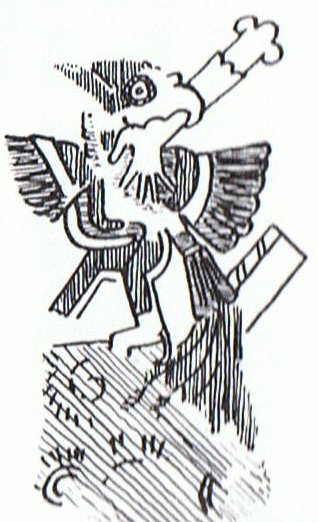
|





















